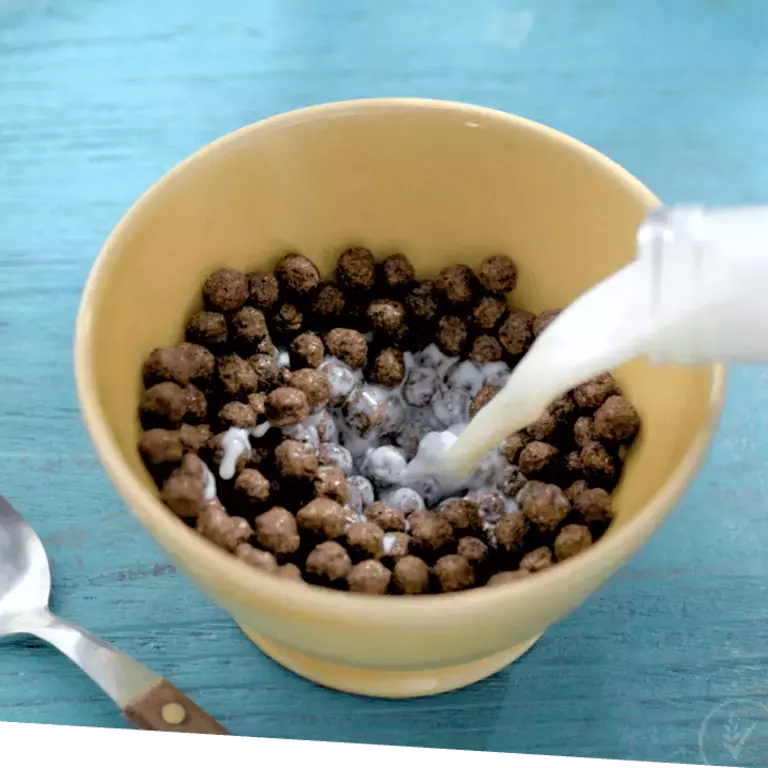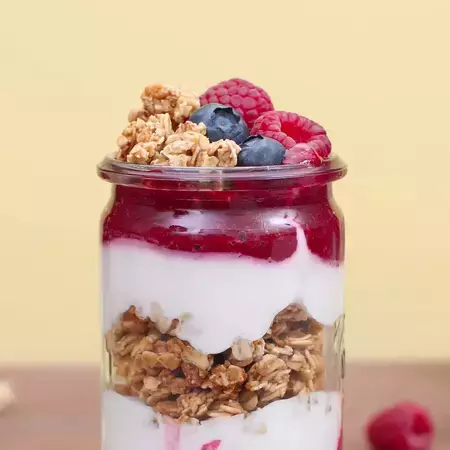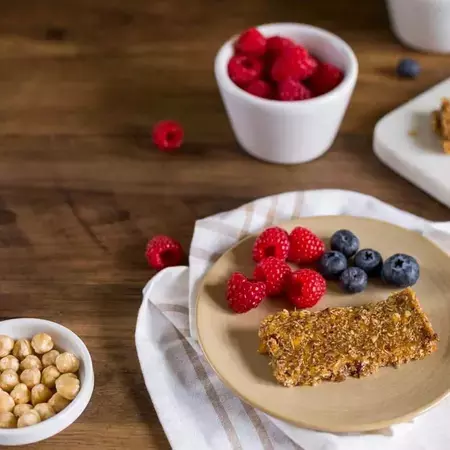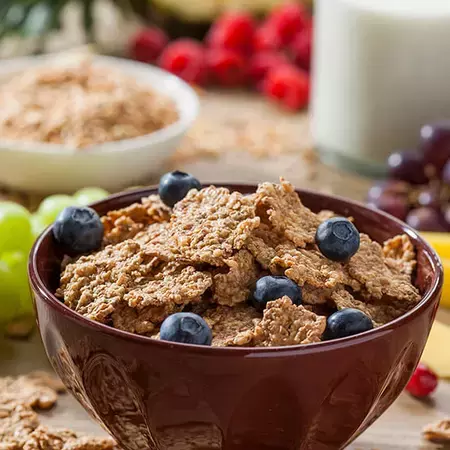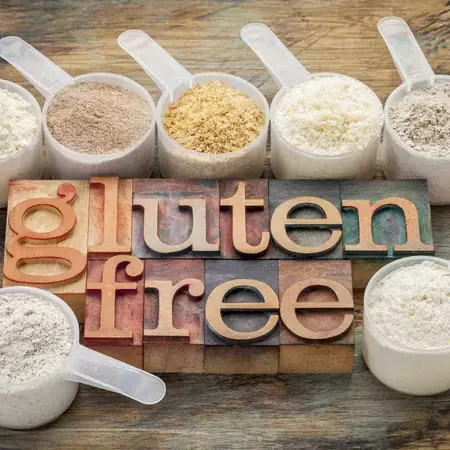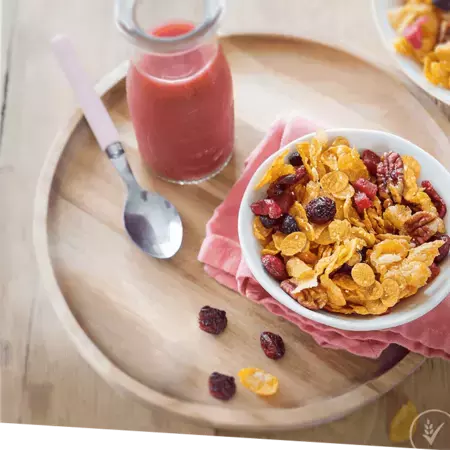There’s something really comforting about the sound of milk being poured into a bowl of cereal. It’s like they’re made for each other. And in many ways, they are! It’s a combination that, when you add some fruit and a drink, gives you a balance of hydration, vitamins, minerals, protein and carbohydrate. Keep reading to find out exactly why cereal and milk is such a great combination.
CEREAL AND MILK IS GREAT FOR GROWING UP
Milk is rich in calcium, which is particularly important for children because they need it for the growth and development of their bones.[1] And, while some children might not drink a glass of milk on its own, a bowl of cereal with milk is a tasty way to encourage them to get some dairy into their diet.
MIGHTY MILK
PROTEIN
Contributes to the maintenance of muscle mass – which is good for daily wear and tear!
CALCIUM
Keeps your teeth and bones healthy and is essential for the normal growth and development of children’s bones . You can blame milk for them growing out of their clothes so quickly!
VITAMIN B2
You might also know this as 'riboflavin' – and, if you didn’t know it before, you now have something to show off about! It helps release energy from our food.
VITAMIN B12
Like B2, it helps turn the food we eat into energy and plays a part in creating oxygen-carrying red blood cells. Sounds a bit technical but rest assured it just helps your body’s motor run smoothly!
IODINE
Great for the nervous system. Boo! (See, you didn’t even flinch).
CEREAL WITH MILK ALTERNATIVES & PLANT BASED DRINKS
Milk and cereal may be a perfect couple, but what if you want a lactose-free alternative? Well, there are plenty to choose from. They taste great and are often calcium-enriched – just check out the labels to see what good stuff is included.
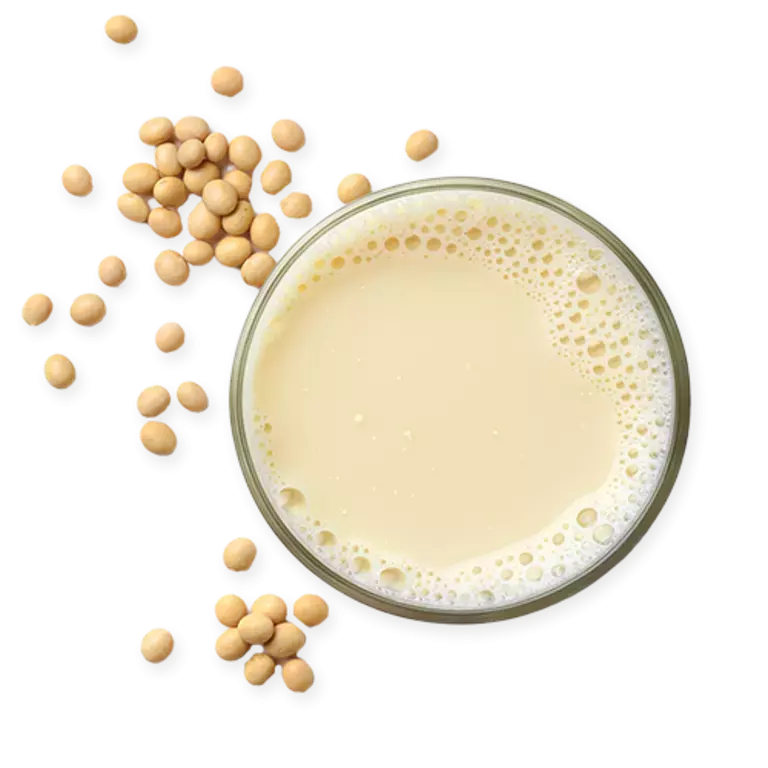

SOURCE OF PROTEIN
Super-rich soy is a good source of protein and is low in saturated fats. It also comes in many different flavours, from simple plain to chocolate, vanilla or coconut. Whichever option you prefer, it will make a great addition to the morning bowl of cereals.


RICH AND CREAMY
Coconut milk contains a significant amount of saturated fats though, so best drunk in moderation. But if you love coconut, the subtle flavour of this beverage will win you over. Combine your favourite cereal with coconut milk for unique flavours.
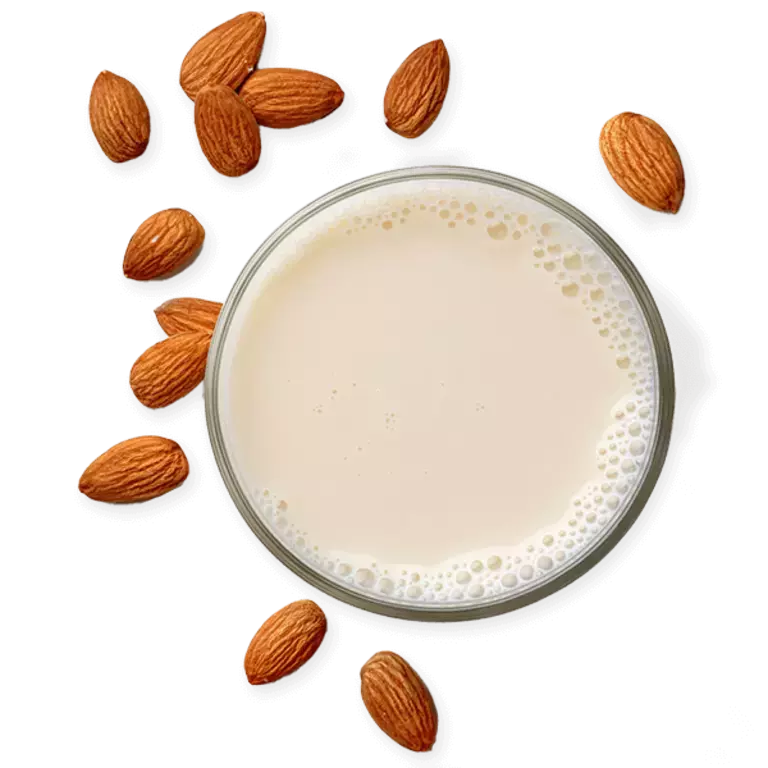

LOW IN SATURATED FAT
Almond milk has its very own light, crisp flavour. The nutty flavour is unmistakable, but it’s all wrapped in a smooth, slightly sweet drink you can use in pretty much everything that requires milk.
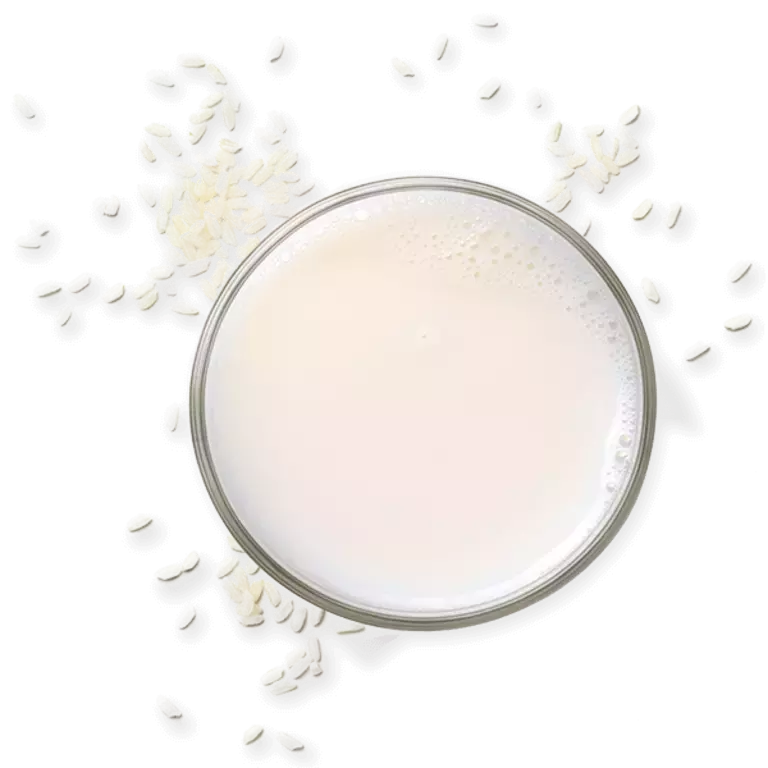

PLANT-BASED
If you’re on a plant-based diet, but trying to avoid nuts, or you’re not a fan of nutty flavours, an alternative plant-based drink to try is rice milk. Sweet and thinner in consistency than other milks – rice milk also tastes sweet with cereals.
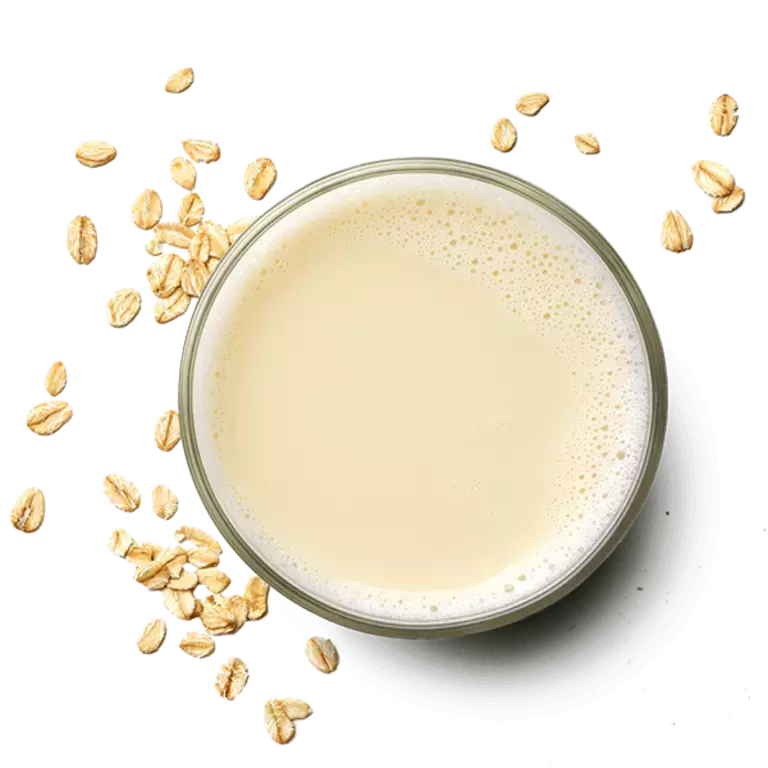

DAIRY-FREE
Oat drinks are constantly featured in pretty much every list of best non-dairy drinks. So, if you haven’t tried it yet, here’s what to expect: a creamy texture, a mild flavour and a naturally sweet taste. It’s great for cooking, delicious to drink on its own, or with cereals, smoothies and lattes.


THE NEWCOMER
The newcomer on the dairy-free milk alternative aisle are pea-based drinks. But before you imagine your breakfast cereals sloshing in a bowl of green juice that tastes just like peas, you’ll be happy to know pea beverages come in a creamy colour and don’t have the vegetable flavour. It’s often considered the cow’s milk alternative that tastes the most like cow’s milk, which makes it a great option if you’re having trouble adjusting to the nutty taste of almond milk or you’re not a fan of the soy milk flavour. You’ll be surprised at how tasty pea milk is with your favourite cereal.
TOP TIP: For any milk alternatives, choose fortified versions, whenever possible
SCRUMMY WAYS TO MIX ‘N’ MATCH MILK AND CEREAL
Your children probably don’t need any encouragement to mess about with their cereal, but just in case, here are a few ideas to create the best milk and cereal combos:
• Go stir crazy – For a super-soggy cereal treat, leave milk to soak in, then stir, stir, stir.
• Keep it crispy – Pour on cold milk and crunch away.
• Turn up the heat – Give milk a short burst in the microwave and turn a bowl of cereal into a warming breakfast.
• Add a dash of flavour – Turn up the taste by adding a drop of cinnamon syrup or honey.
• Go rainbow – Add chopped pieces of fruit to create a colourful breakfast.
• Bowl them over – Who says cereal has to be eaten out of a bowl? Is it possible that it could taste even nicer out of their favourite mug? You be the judge.
